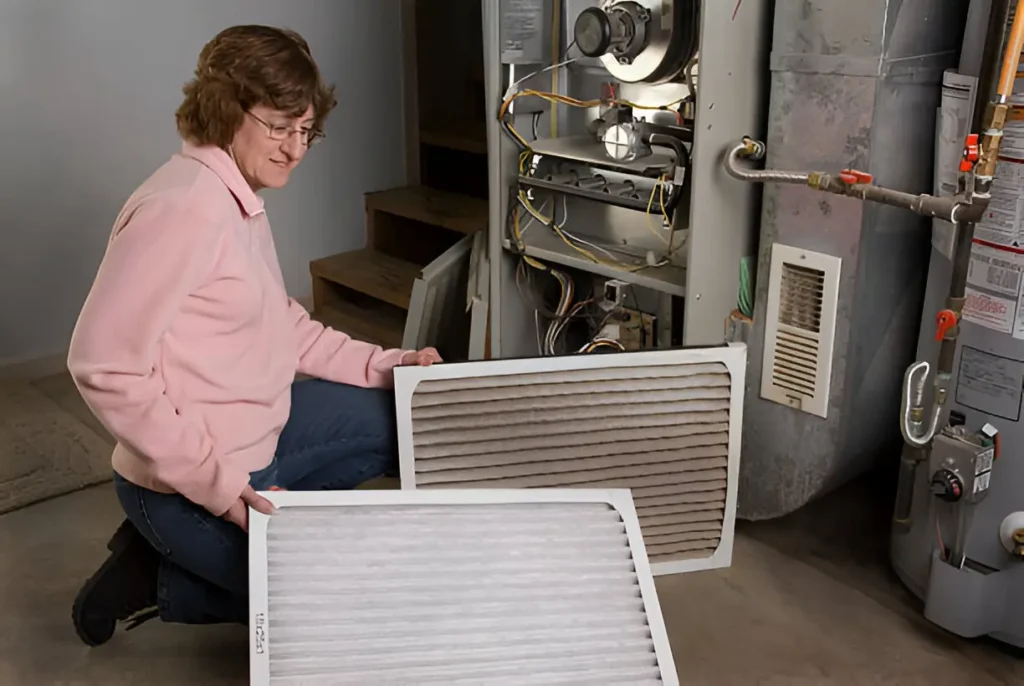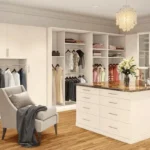Your HVAC system relies on air filters to maintain performance, lower energy costs, and protect your family’s health. Neglecting dirty filters can strain your system, increase bills, and worsen respiratory issues. Replacing filters regularly is essential, but how often depends on your home and lifestyle. Staying proactive can save money and improve air quality.
What Influences Your Filter Replacement Schedule
Air filter replacement isn’t a one-size-fits-all situation. Several factors determine how quickly your filters collect dust, debris, and contaminants.
Pet Ownership Makes a Difference
Homes with furry companions need more frequent filter changes. Dogs and cats shed dander, hair, and bring in outdoor allergens on their paws and coats. If you have one pet, consider changing filters every 60-90 days instead of the standard recommendation. Multiple pets mean even more frequent changes—potentially every 30-60 days.
Allergy Sufferers Need Extra Protection
Family members with asthma, allergies, or other respiratory sensitivities benefit from cleaner air. For these households, monthly filter changes often provide the best results. High-efficiency filters can trap smaller particles that trigger symptoms, but they also clog faster than basic filters.
Location and Environmental Factors
Your geographic location significantly impacts filter replacement frequency. Homes in dusty areas, near construction sites, or in regions with high pollen counts will need more frequent changes. Similarly, if you live in an area prone to wildfires or have nearby industrial activity, your filters work overtime to keep contaminants out.
Seasonal changes also matter. Spring brings pollen, summer increases dust circulation from open windows and higher HVAC usage, and winter often means longer periods with sealed homes where particles accumulate.
Health Risks of Neglecting Filter Changes
Dirty air filters don’t just reduce comfort—they can actively harm your family’s health. When filters become clogged, they lose their ability to trap airborne particles effectively. This means dust, pollen, pet dander, and other allergens circulate freely through your home.
The health implications extend beyond minor discomfort. Dirty filters can worsen asthma symptoms, trigger allergic reactions, and contribute to respiratory infections. Children and elderly family members face the highest risks because their immune systems are more vulnerable to airborne contaminants.
Mold growth presents another serious concern. When filters stay damp from humidity and accumulated debris, they become breeding grounds for mold spores. These spores then spread throughout your home’s air system, potentially causing serious respiratory issues and allergic reactions.
Energy Efficiency and Cost Savings
Clean air filters directly impact your energy bills. When filters become clogged with debris, your HVAC system must work harder to pull air through the obstruction. This increased effort translates to higher energy consumption and steeper utility bills.
The Department of Energy estimates that replacing dirty filters can improve energy efficiency by 5-15%. For the average household, this translates to $50-150 in annual savings. Over time, these savings easily offset the cost of regular filter replacements.
Dirty filters also strain HVAC components, leading to premature wear and potentially expensive repairs. Motors work harder, fans struggle against restricted airflow, and heat exchangers operate less efficiently. In extreme cases, restricted airflow can cause systems to overheat and shut down, requiring emergency repairs or even furnace replacements like those in Herriman.
Understanding Different Filter Types and Lifespans
Air filters come in various types, each with different replacement schedules and filtration capabilities.
Basic Fiberglass Filters
The most economical option, fiberglass filters typically last 30 days. They catch large particles but allow smaller contaminants to pass through. These work well for homes without pets or allergy concerns.
Pleated Filters
Pleated filters offer better filtration than fiberglass options and typically last 60-90 days. Their accordion-style design provides more surface area for capturing particles while maintaining reasonable airflow.
High-Efficiency Filters
HEPA and high-MERV rated filters provide superior filtration but require more frequent changes—often every 30-60 days. They excel at capturing small particles but can restrict airflow if not changed promptly.
Washable Filters
Some homeowners choose washable filters for environmental reasons. While these reduce waste, they require monthly cleaning and may not provide the same filtration level as disposable options.
Step-by-Step Filter Replacement Guide
Replacing your air filter is straightforward, but doing it correctly ensures optimal performance.
Step 1: Locate Your Filter
Most filters are found in the return air duct, near your furnace or air handler. Some systems have filters at individual return vents throughout the house.
Step 2: Turn Off Your System
Switch off your HVAC system before removing the old filter to prevent debris from being sucked into the equipment.
Step 3: Remove the Old Filter
Note the airflow direction arrow on the old filter before removing it. Take a photo if you’re unsure about the correct orientation.
Step 4: Check the Filter Size
Verify the dimensions printed on the filter frame. Common sizes include 16x25x1, 20x25x1, and 16x20x1 inches.
Step 5: Install the New Filter
Insert the new filter with the airflow arrow pointing toward the HVAC unit. Ensure it fits snugly without gaps around the edges.
Step 6: Mark Your Calendar
Set a reminder for your next replacement date based on your specific circumstances and filter type.
When to Call the Professionals
While filter replacement is typically a DIY task, certain situations require professional attention. If you notice unusual odors, excessive dust despite regular filter changes, or uneven heating and cooling, contact an HVAC technician.
Professional maintenance becomes essential if you’re unsure about your filter location, if filters don’t fit properly, or if your system requires custom filter sizes. Technicians can also assess whether your current filter type matches your family’s needs and recommend upgrades if necessary.
Annual professional inspections help identify potential issues before they become expensive problems. During these visits, technicians clean components that homeowners cannot reach and ensure optimal system performance.
Conclusion
Regularly replacing your air filters is a simple, cost-effective way to lower energy bills, improve indoor air quality, and extend your HVAC system’s lifespan. Consider factors like pets and allergies to determine a replacement schedule, and check filters monthly during heavy usage. Prioritize clean air for a healthier, more efficient home.
Read more: Simplify Property Challenges With Expert Management
How to Create a Professional WhatsApp Page for Your Business
Tenant Retention Strategies Every Property Manager Should Know



